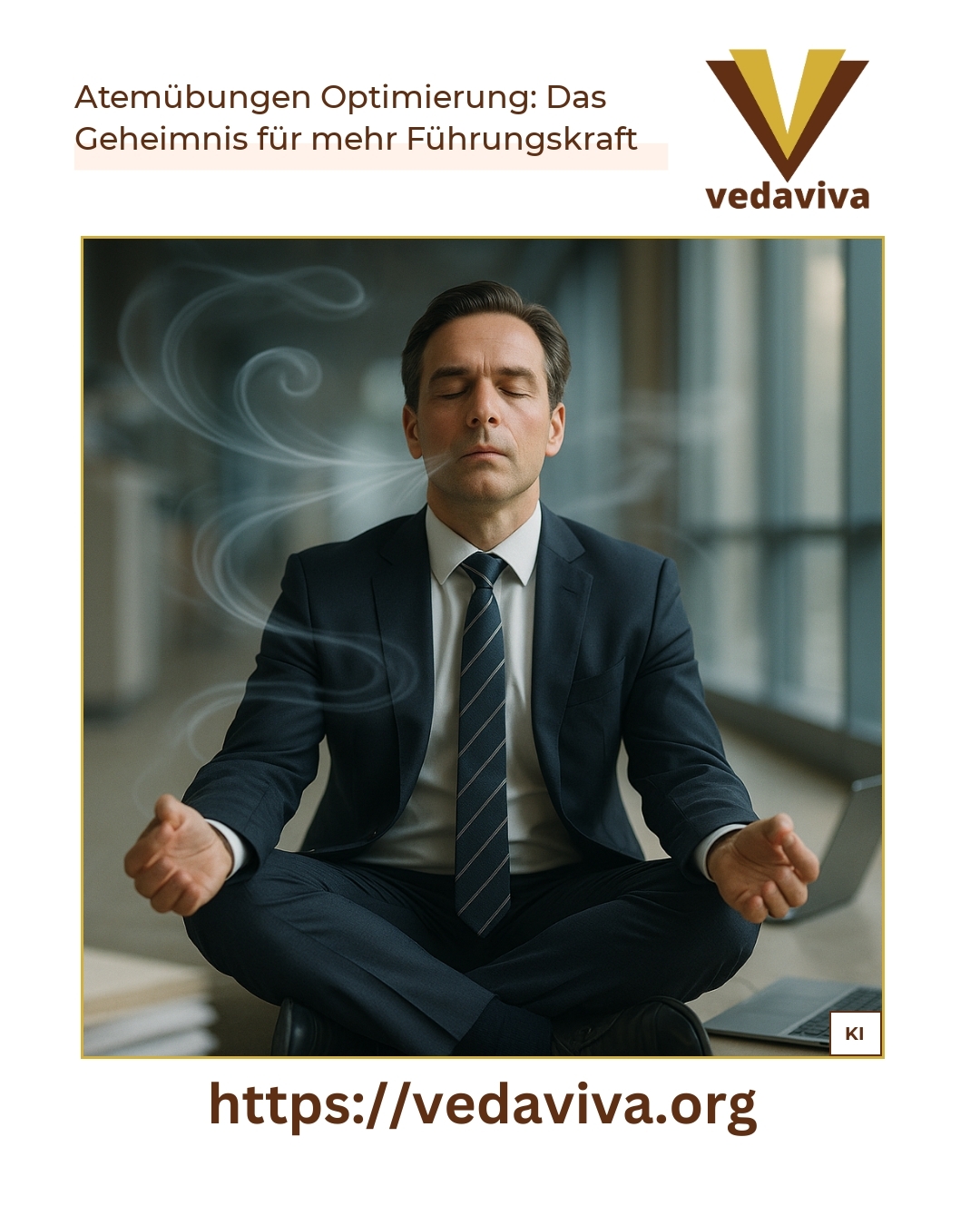Optimising breathing exercises: the key to strengthening your personal leadership skills
Optimising breathing exercises is an essential approach to sustainably supporting your own presence and performance. The targeted improvement of breathing not only promotes physical well-being, but also mental clarity and emotional balance - factors that can make a significant contribution to strengthening leadership skills. Improving the quality of your breathing creates space for more inner calm and self-control, which is particularly important in challenging situations at work. This is why optimising breathing exercises is becoming increasingly important when it comes to professional and personal development.
Why breathing exercises optimisation influences personal leadership
Breathing exercises Optimisation works on several levels: It strengthens the respiratory muscles, increases the body's oxygen supply and directly influences the autonomic nervous system. This has an effect on stress management, the ability to concentrate and emotional stability. Breathing consciously activates the parasympathetic nervous system, which ensures relaxation and recovery. This can reduce the inner tension that often clouds our ability to make decisions in stressful situations. At the same time, physical stamina and resistance to exhaustion are improved - important qualities for managers who have to overcome complex challenges on a daily basis.
The perception of your own body signals is also sharpened through the breathing exercises. This makes it possible to recognise signs of stress at an early stage, which in turn has a preventative effect. Last but not least, optimising breathing exercises supports communication skills, as calm and controlled breathing promotes a clear and convincing voice, which creates confidence.
Practical examples of breathing exercise optimisation in practice
BEST PRACTICE at company XY (name changed due to NDA contract) A leadership training course integrated breathing exercises Optimisation to reduce stress levels before meetings. The participants reported that they felt more focussed and balanced, which led to improved team communication.
BEST PRACTICE at company AB (name changed due to NDA contract) In an innovation workshop, breathing exercises were used to optimise complex problem-solving phases. The consciously controlled breathing helped the participants to be more mentally present and provide constructive impetus.
BEST PRACTICE at the company LM (name changed due to NDA contract) Executives from the field of HR management used regular breathing exercises to optimise their resilience while working on demanding projects. Feedback showed that the exercises helped to improve recovery phases and keep performance stable.
Effective breathing techniques that contribute to breathing exercise optimisation
A conscious and regular practice of various breathing techniques supports the effective optimisation of breathing exercises. Abdominal breathing, for example, can be easily integrated into everyday life: Breathing deeply into the abdomen deepens breathing and increases oxygen uptake. This technique can be used especially before stressful situations to promote calmness.
Box breathing is another technique that is very effective for optimising breathing exercises. Here you inhale slowly, hold your breath, exhale and pause for equal intervals of time. This precise control of breathing calms the nervous system and promotes concentration.
Finally, it is worth integrating exercises to strengthen the respiratory muscles. These include targeted inhalation and exhalation exercises that activate the diaphragm and increase lung capacity. Improved breathing economy can have a positive effect on stamina and stress tolerance.
Concrete tips for the everyday practice of breathing exercises Optimisation
Start the day with a short breathing meditation in which you breathe deeply and consciously through your stomach for 5 minutes. This creates calm and clarity for the day ahead. Use the box breathing technique during challenging moments to quickly collect yourself and regain your focus.
In times of stress, it helps to take a conscious break and breathe in and out slowly through the nose for a few breaths. Nasal breathing filters the air and slows down the breathing rhythm, which in turn has a relaxing effect. Also make sure to improve your posture, as an open chest significantly supports the breathing movement.
For long-term implementation, we recommend short daily breathing exercises that you can incorporate during short breaks or after work, for example. Consistent practice promotes the sustainable optimisation of breathing and therefore your physical and mental vitality.
My analysis of the importance of optimising breathing exercises for managers
Breathing exercise optimisation is an effective tool for strengthening personal leadership. It has a significant influence on stress management, mental presence and physical performance. Simple, easy-to-implement breathing techniques offer the opportunity to improve well-being and communication without the need for a great deal of effort.
Managers who systematically use breathing exercises to optimise their performance can increase their composure and act more clearly in challenging situations. This not only supports their own health, but also the success of the team and the company. Practical examples from various sectors show that the accompanying use of optimisation breathing exercises is already regarded as a helpful resource in a professional context.
Further links from the text above:
1. breathing training as the key to better health and increased performance
2. breathing therapy techniques: Advantages, exercises
Legal notice: Coaching does not replace therapy. It serves personal development. I do not diagnose or promise a cure. My offer is for personal development and is not a substitute for medical, psychotherapeutic or curative treatment. Please consult a medically qualified specialist if you have any health complaints. The experiences described here are based on individual feedback from my clients. They are not a guarantee of success and do not replace medical or therapeutic counselling. For more information and if you have any questions, please contact Contact us on the topic or read further blog posts on the Topic here.













